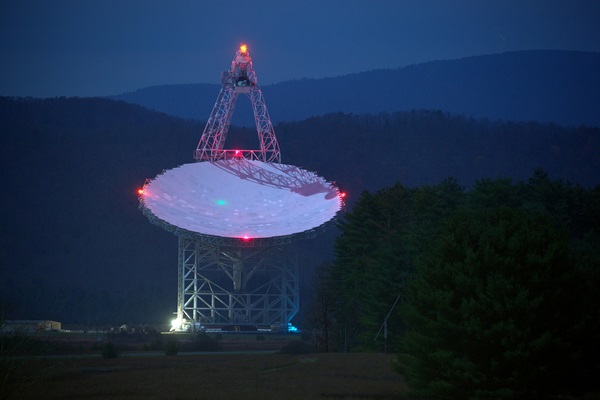Key Takeaways:
Fifteen new bursts may not seem unique among such a high number, but these bursts are different. They are the first time that FRB 121102 has been seen bursting at high frequencies; and they also signal, according to Vishal Gajjar of the University of California, Berkeley, a “newly active state.” On August 26, Gajjar was observing FRB 121102 using the Green Bank Telescope in West Virginia as part of Breakthrough Listen and detected 15 new pulses over the course of five hours. The brightest burst occurred at about 7 GHz, a higher frequency than any pulse observed from an FRB before. Although the results have not yet been incorporated into a scientific article, some information is available in an Astronomer’s Telegram.
The results come from a dataset 400 terabytes in size, covering frequencies from 4 to 8 GHz. “The high resolution of the data obtained by the Listen instrument will allow measurement of the properties of these mysterious bursts at a higher precision than ever possible before,” said Gajjar in a press release. “The extraordinary capabilities of the [Breakthrough Listen] backend receiver, which is able to record several gigahertz of bandwidth at a time, split into billions of individual channels, enable a new view of the frequency spectrum of FRBs, and should shed additional light on the processes giving rise to FRB emission.”
Currently, one of the leading theories outlines the source of FRBs as highly magnetized neutron stars, called magnetars, which may experience outbursts related to starquakes or magnetic field events. On the other end of the spectrum, FRBs could potentially be directed energy signals used by extraterrestrial civilizations to power spacecraft — a technique similar to that planned for Breakthrough Starshot, as well as the type of signal that projects such as Laser SETI will search for.
Regardless of their cause, these particular bursts left their home galaxy when our solar system was just 2 billion years old, and life on Earth was in the form of single-celled organisms. The team was able to determine their origin and distance by measuring the effects of dispersion on the signal, which allowed them to calculate the amount of material — and thus the distance — between Earth and the signal’s source, whatever it may be.
FRB 121102 is just one of millions of targets for the Breakthrough Listen project, which was launched in 2015 by Yuri Milner and Stephen Hawking to search for signs of technologically advanced extraterrestrial life.











